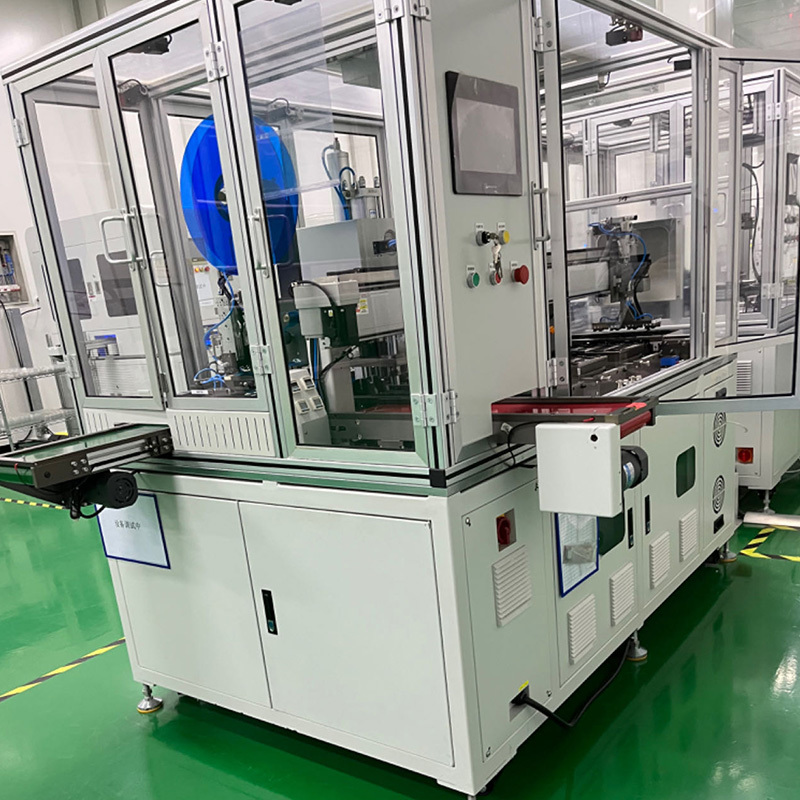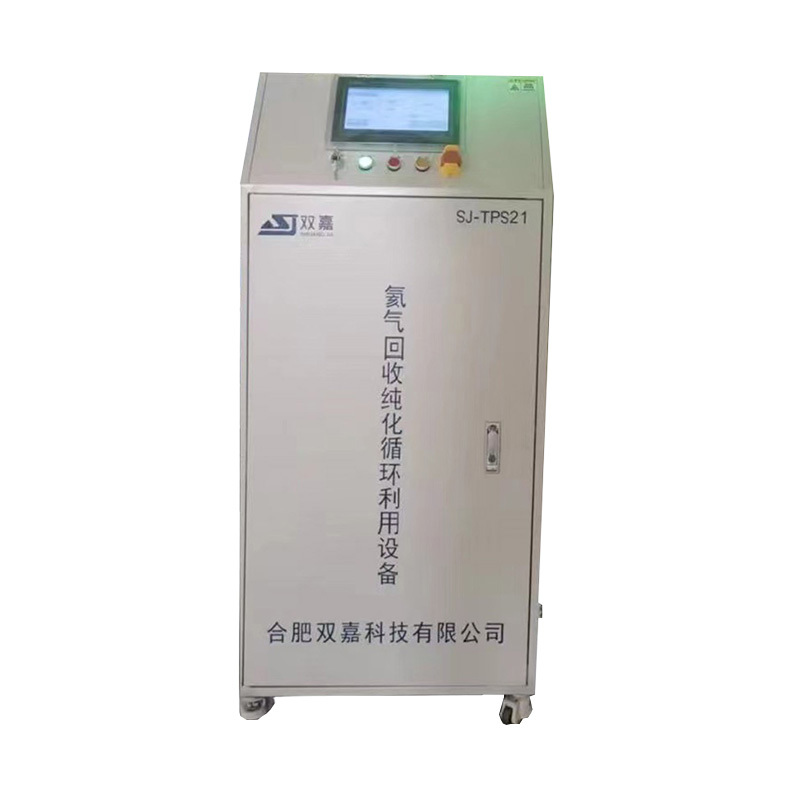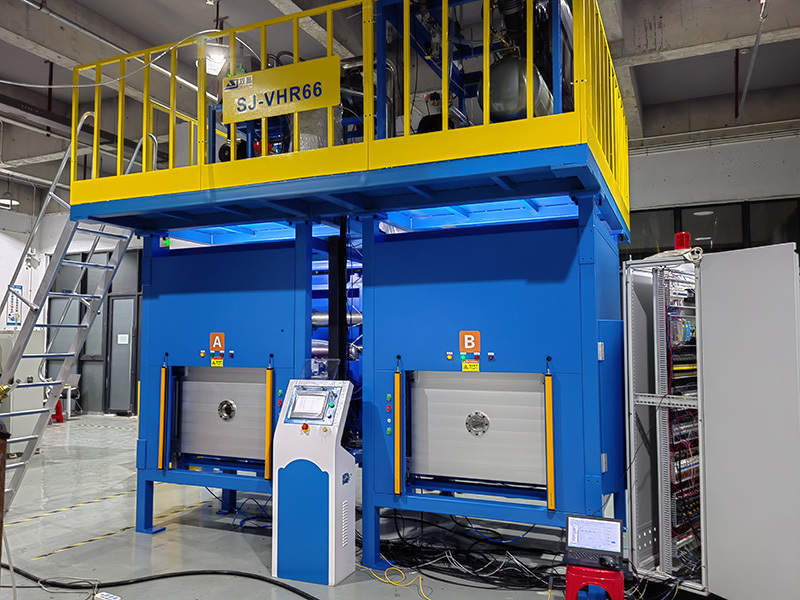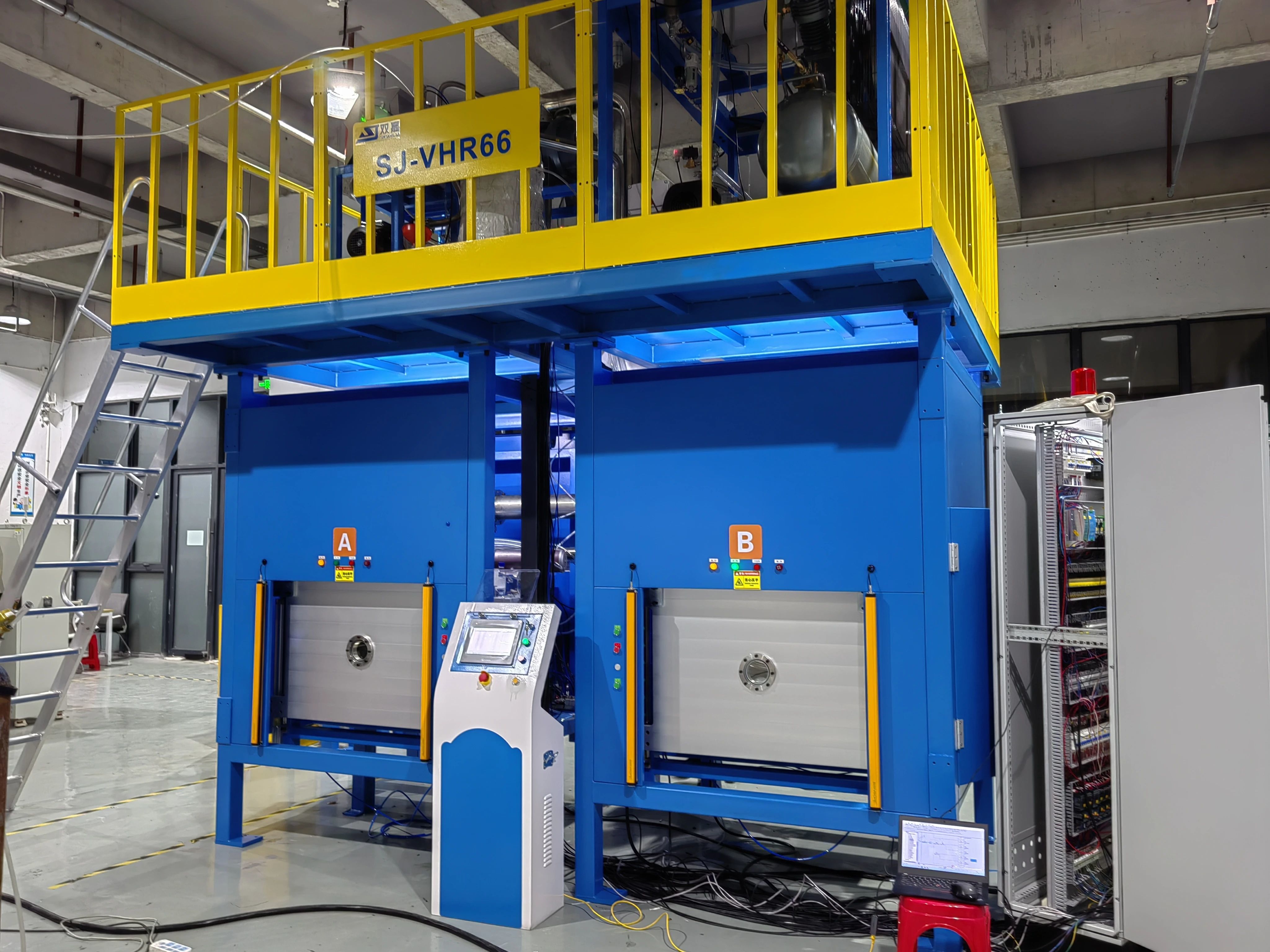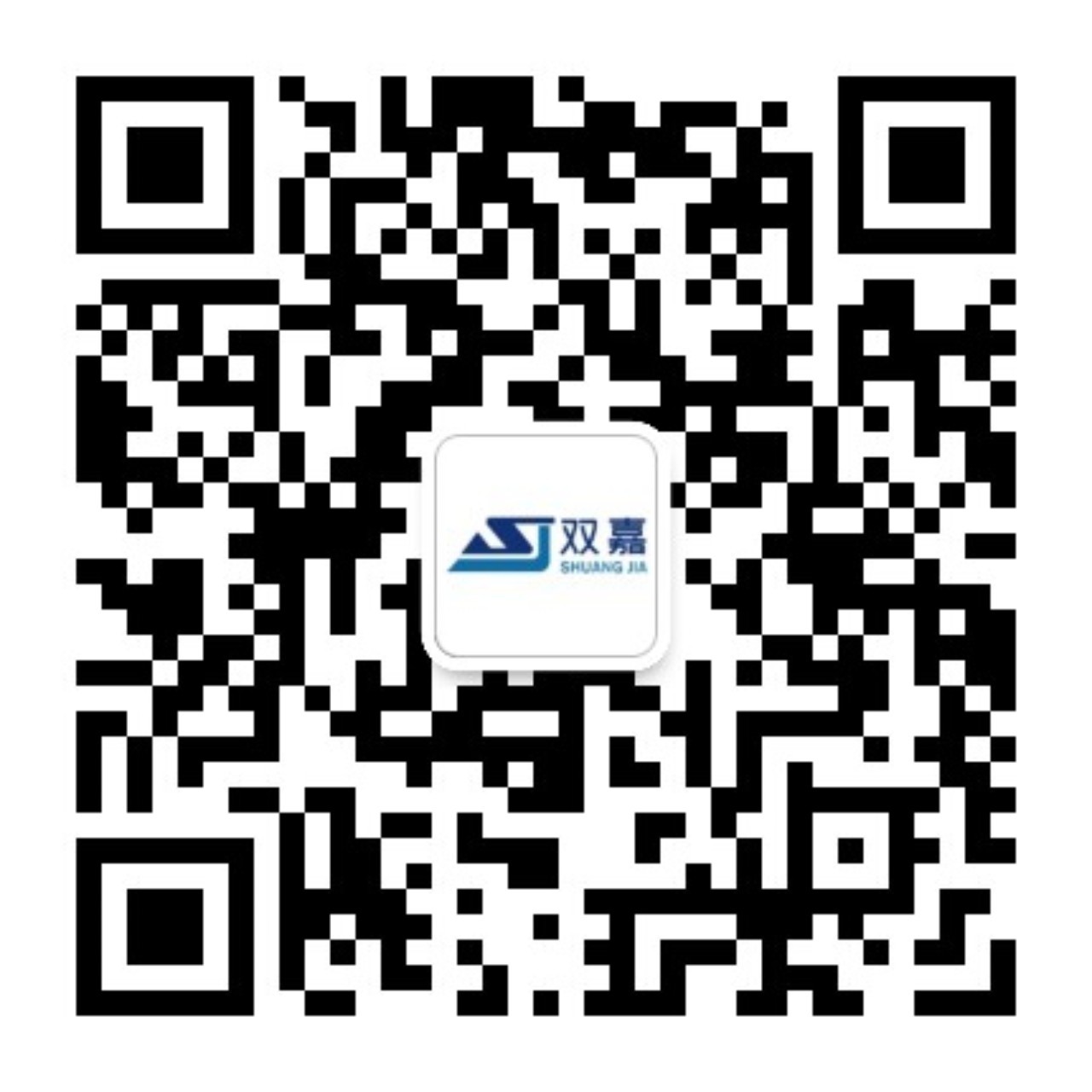Information Details
Detection principles, advantages, disadvantages, and detection standards of four common helium mass spectrometry leak detection methods
When leak detection is performed using the vacuum method, an auxiliary vacuum pump or leak detector is used to evacuate the internal sealed chamber of the product under test. Helium gas is applied to the outer surface of the product using a helium hood or spraying method. When there is a leak hole on the surface of the product under test, the helium gas will pass through the leak hole and Enter the inside of the product under test, and then Enter the helium mass spectrometer leak detector, so as to measure the leakage amount of the product under test. According to the different methods of applying leaked gas, the vacuum method can also be divided into vacuum spraying method and vacuum helium hood method. The vacuum spraying method uses a spray gun to spray helium gas onto the outer surface of the product under test, which can accurately locate the leak hole; the vacuum helium hood method uses a helium hood with a certain sealing function to cover the entire product under test, and fills the hood with a certain concentration of helium gas, which can measure the total leakage rate of the product under test.
Release time:
2025-03-10
Helium Mass Spectrometry Leak Detection by Vacuum Method
When using the vacuum method for leak detection, an auxiliary vacuum pump or leak detector is used to evacuate the internal sealed chamber of the product being inspected. Helium gas is applied to the outer surface of the product using a helium hood or spraying method. When there is a leak hole on the surface of the product being inspected, the helium gas will pass through the leak hole into the interior of the product and then into the helium mass spectrometer leak detector, thus achieving the measurement of the leakage rate of the product being inspected. According to the different methods of applying leak gas, the vacuum method can be divided into vacuum spraying and vacuum helium hood methods. The vacuum spraying method uses a spray gun to spray helium gas onto the outer surface of the product being inspected, which can achieve accurate positioning of the leak hole; the vacuum helium hood method uses a helium hood with a certain sealing function to cover the entire product being inspected, filling the hood with a certain concentration of helium gas, which can achieve the measurement of the total leakage rate of the product being inspected.
The advantages of the vacuum method are its high detection sensitivity, accurate positioning capability, and the ability to perform leak detection on large containers or products with complex structures.
The disadvantage of the vacuum method is that it can only perform leakage rate detection with one atmospheric pressure difference and cannot accurately reflect the actual leakage state of the pressurized product under inspection.
The main detection standards for the vacuum method are QJ3123-2000 "Helium Mass Spectrometry Vacuum Leak Detection Method" and GB/T 15823-2009 "Helium Leak Test". It is mainly used for products with vacuum sealing performance requirements but no pressure, such as space active components, liquid hydrogen tank trucks, and environmental simulation equipment.
Helium Mass Spectrometry Leak Detection by Positive Pressure Method
When using the positive pressure method for leak detection, helium gas with a pressure higher than one atmosphere needs to be filled into the internal sealed chamber of the product being inspected. When there is a leak hole on the surface of the product being inspected, the helium gas will leak through the hole into the surrounding atmospheric environment of the outer surface of the product, and then the concentration increment of helium gas in the surrounding atmospheric environment of the product being inspected is detected using a suction gun, thus achieving the measurement of the leakage of the product being inspected. According to the different methods of collecting helium gas, the positive pressure method can be divided into positive pressure suction gun method and positive pressure accumulation method. The positive pressure suction gun method uses the leak detector suction gun to scan and probe the outer surface of the product being inspected, which can achieve accurate positioning of the leak hole; the positive pressure accumulation method uses a helium hood with a certain sealing function to cover the entire product being inspected, and uses the leak detector suction gun to measure the change in helium gas concentration in the helium hood before and after a certain period of time, achieving accurate measurement of the total leakage rate of the product being inspected.
The advantages of the positive pressure method are that it does not require an auxiliary vacuum system, can achieve accurate positioning, and can perform detection under any operating pressure.
The disadvantages of the positive pressure method are its lower detection sensitivity, larger uncertainty in the detection results, and greater influence by the measurement environmental conditions.
The main detection standards for the positive pressure method are QJ3089-1999 "Helium Mass Spectrometry Positive Pressure Leak Detection Method" and QJ2862-1996 "Pressure Vessel Weld Seam Helium Mass Spectrometry Suction Gun Hood Box Leak Test Method". It is mainly used for leak detection of large-volume, high-pressure, sealed container products, such as high-pressure helium cylinders and cabin door leak detectors.
Helium Mass Spectrometry Leak Detection by Vacuum Pressure Method
When using the vacuum pressure method for leak detection, the product being inspected needs to be placed in a vacuum sealing chamber. The vacuum sealing chamber is connected to an auxiliary evacuation system and a leak detector. The inflation port of the product being inspected is led out of the vacuum sealing chamber through a connecting pipe and then connected to a helium gas source. When there is a leak hole on the surface of the product being inspected, helium gas will pass through the leak hole into the vacuum sealing chamber and then into the helium mass spectrometer leak detector, thus achieving the measurement of the total leakage rate of the product being inspected.
The advantages of the vacuum pressure method are its high detection sensitivity, the ability to perform leakage rate detection at any operating pressure, and its reflection of the actual leakage state of the component being inspected.
The disadvantages of the vacuum pressure method are its complex leak detection system and the need to design a vacuum sealing chamber according to the volume and shape of the product being inspected. It should be noted that during the leak detection process, it is necessary to ensure that there is no leakage at the inflation pipe interface, or to adopt a special structural design to place all inflation pipe connection interfaces outside the vacuum sealing chamber.
The detection standards for the vacuum pressure method include GB/T 15823-2009 "Helium Leak Test". It is mainly used for sealed products with simple structures and not particularly high pressure, such as solenoid valves, high-pressure inflation pipelines, propellant tanks, antennas, transponders, and complete satellite products.
Helium Mass Spectrometry Leak Detection by Back Pressure Method
When using the back pressure method for leak detection, the product being inspected is first placed in a high-pressure helium chamber and soaked for several hours or days. If there is a leak hole on the surface of the product being inspected, helium gas will enter the internal sealed cavity of the product being inspected through the leak hole, causing the partial pressure of helium in the internal sealed cavity to rise. Then, the product being inspected is taken out, the remaining helium gas on the surface is blown away, and then the product being inspected is placed in a vacuum container connected to the leak detector. The helium gas in the internal sealed cavity of the product being inspected will leak through the leak hole into the vacuum container and then into the helium mass spectrometer leak detector, thus achieving the measurement of the total leakage rate of the product being inspected. The leakage rate given by the leak detector is the measured leakage rate, and the equivalent standard leakage rate of the product being inspected needs to be calculated using the conversion formula.
The advantages of the back pressure method are its high detection sensitivity, its ability to perform leakage detection on small sealed container products, and its suitability for batch detection.
The disadvantages of the back pressure method are its inability to perform leakage detection on large sealed containers (because the volume of the sealed cavity is too large, leading to excessively long pressurization time). In addition, each measured leakage rate corresponds to two equivalent standard leakage rates. After fine inspection, other methods need to be used for rough inspection to eliminate the possibility of large leaks.
The leak detection standards for the back pressure method mainly include QJ3212-2005 "Helium Mass Spectrometry Back Pressure Leak Detection Method" and GJB360A-1996 "Test Methods for Electronic and Electrical Components Method 112 Sealing Test". It is mainly used for leak detection of various electronic component products.
Previous Page
Previous Page
Latest Blog


